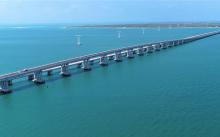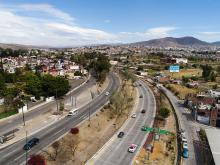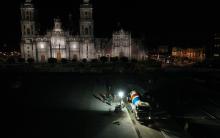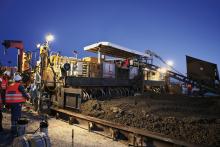
CEMEX, the global building materials group, is to participate in the renovation of 6.5 kilometres of roads for the Mazatlán Promenade in Mexico, one of the largest in the world and one of the port’s main tourist attractions.
It’s the first time in 50 years that the promenade has been renovated for its visitors. The previous pavement had fractures, potholes, and leaks that not only affected the circulation and safety of the thousands of vehicles that transit the course daily, but also the image of the area.
To renovate the section, CEMEX supplied and placed 17,000m³ of 20cm-thick hydraulic concrete with the necessary resistance for daily use.
"For us, it was very important to open the circulation of this road as soon as possible not only to enable the area to host international events such as the Great Pacific Marathon, but also to interrupt local and tourist traffic as little as possible," said Osbaldo López Angulo, secretary of Public Works of the Mexican State of Sinaloa.
To fulfil this request, those responsible for the design and construction of the concrete pavement presented a set of solutions that reduced the work schedule by 40%, from five months to the time required without sacrificing quality. This enabled the renovation to not affect the circulation.
"A three-day placement, high early strength concrete was proposed to allow for the rapid opening of circulation, along with the use of a system of optimized slabs," said Alejandro Varés, vice president of Infrastructure and Government, CEMEX Mexico. "The system reduces the thickness of the pavement, eliminates the use of passages, and allows for a more efficient distribution of vehicle loads by reducing the dimensions of the slabs; this translated into a lower initial cost without sacrificing the advantages that distinguish concrete pavement.”
As the most important route of this tourist city, the work was carried out 24 hours a day, including the production and placement of 480m³ of concrete, night supplies, the simultaneous operation of two pavers, the work of five teams of 110 people each, and the accomplishment of shoring, profiling, and cleaning, among others.
These products and services helped not only to increase the useful life of the road for up to 30 years and reduced maintenance costs, but also to enable Mazatlán to present a new face to visitors, renovating an important meeting place for its inhabitants.









